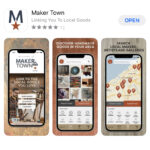
I. Understanding Upcycling: Definition and Benefits
II. Steps to Launch Your Upcycling Business
III. Marketing Your Upcycled Products Effectively
Understanding Upcycling: Definition and Benefits
Hey there! If you’re curious about sustainability and creativity, you’ve probably heard the term upcycling floating around. But what exactly does it mean, and why is it so beneficial? Let’s dive in!
What is Upcycling?
At its core, upcycling is the process of transforming waste materials or unwanted products into something new and of higher quality. Think of it as giving old items a fresh lease on life! Rather than tossing out items that no longer serve their original purpose, upcycling encourages us to get creative and repurpose them into something functional or artistic.
Why Should You Upcycle?
There are numerous reasons to fall in love with upcycling. Here are a few compelling benefits:
- Environmental Impact: Upcycling helps reduce landfill waste and lowers our carbon footprint. By reusing materials, we’re less reliant on new resources, which is crucial for protecting our planet.
- Cost-Effective: Upcycling can save you money. Instead of purchasing new items, you can use materials you already have. It’s a win-win for your wallet and the environment!
- Creativity Boost: Upcycling is a fantastic outlet for creativity. It encourages you to think outside the box and come up with innovative solutions. Plus, there’s something incredibly satisfying about turning what others see as trash into treasure.
- Unique Products: Upcycled items often have a unique charm that mass-produced products lack. Each piece you create can be one-of-a-kind, making your offerings special and appealing to customers.
- Community Engagement: Upcycling can foster community spirit. By sharing your creations, you inspire others to consider sustainable practices, and you may even spark a local movement!
Upcycling vs. Recycling
While upcycling and recycling are often mentioned together, they are not the same. Recycling involves breaking down materials to create new products, which can sometimes lead to a loss of material quality. Upcycling, on the other hand, maintains the original integrity of the materials, usually resulting in something of greater value than the original item. So, while both are important, upcycling has that extra flair!
Get Involved!
If you’re feeling inspired, why not try your hand at upcycling? Start by looking around your home for items that could use a makeover. Old furniture, glass jars, or even fabric scraps can all be transformed into something beautiful. There are countless resources online where you can find tutorials and ideas that suit your style and skills.
In a nutshell, upcycling is not just about creativity; it’s about making a difference in our world. So, roll up your sleeves, unleash your inner artist, and start upcycling today!
Steps to Launch Your Upcycling Business
So, you’ve got a passion for upcycling and want to turn that hobby into a thriving business? That’s fantastic! Upcycling not only helps the environment but also offers a unique and creative way to express yourself. Let’s dive into the steps you’ll need to take to launch your very own upcycling business and make your mark in the eco-friendly market.
1. Find Your Niche
Before you jump in, it’s crucial to identify what type of upcycled products you want to focus on. This is your chance to shine! Consider the following:
- Your Skills: What are you good at? Sewing, woodworking, painting? Choose a niche that aligns with your talents.
- Materials: What kind of materials do you have access to? Think about everyday items like glass bottles, old furniture, or fabric scraps.
- Market Demand: What’s trending? Check out platforms like Etsy or Pinterest to see what’s popular in the upcycling realm.
2. Create a Business Plan
Once you’ve pinpointed your niche, it’s time to draft a business plan. Don’t worry, it doesn’t have to be super fancy! Just focus on the basics:
- Business Goals: What do you want to achieve? Set realistic short-term and long-term goals.
- Target Audience: Who are your ideal customers? Consider demographics like age, interests, and values.
- Budget: Outline your startup costs, including materials, tools, and marketing expenses.
3. Source Your Materials
Now that you have a plan, it’s time to gather your materials! Here are some great places to look:
- Thrift Stores: Perfect for finding unique items that can be transformed.
- Garage Sales: A goldmine for cheap and interesting materials!
- Online Marketplaces: Websites like Freecycle or Facebook Marketplace can offer free or low-cost items.
4. Develop Your Craft
Before you start selling, it’s important to hone your skills. Practice makes perfect! Try experimenting with different techniques, and don’t be afraid to make mistakes. Each failure is a stepping stone toward mastering your craft. You might also consider:
- Taking Workshops: Look for local classes that focus on upcycling or DIY crafts.
- Joining Online Communities: Engage with fellow upcyclers on social media platforms or forums for tips and inspiration.
5. Set Up Your Online Presence
In today’s digital age, having an online presence is crucial. Here’s how to get started:
- Create a Website: Use platforms like Shopify or WordPress to set up your online store.
- Utilize Social Media: Platforms like Instagram and Pinterest are perfect for showcasing your creations. Share your process and connect with your audience!
- Consider Online Marketplaces: Sites like Etsy or eBay can help you reach a larger audience right away.
6. Launch and Promote
Once everything is in place, it’s time for the big launch! Spread the word about your new business. You can:
- Host a Launch Event: Whether online or in-person, celebrate your launch and invite friends and family.
- Offer Promotions: Consider introductory discounts or giveaways to attract initial customers.
Launching an upcycling business can be a joyful and rewarding journey. Remember to stay true to your creative vision and make the most out of every opportunity. Good luck, and happy upcycling!
Marketing Your Upcycled Products Effectively
So, you’ve crafted some amazing upcycled products, and now it’s time to share them with the world! But how do you get your creations in front of the right audience? Let’s dive into some friendly, effective marketing strategies that will help you shine a spotlight on your upcycled treasures.
1. Know Your Audience
Before you start marketing, take a moment to think about who your ideal customer is. Are they eco-conscious shoppers, DIY enthusiasts, or perhaps people looking for unique home decor? Understanding your audience will help you tailor your messaging. Ask yourself:
- What do they value? (Sustainability, creativity, uniqueness)
- Where do they spend their time online?
- What other products do they love?
2. Create an Engaging Brand Story
Your brand story is your chance to connect with your customers on a deeper level. Share the journey of your upcycled products—from the inspiration behind them to the process of transforming materials. People love transparency and authenticity! Here are a few tips:
- Be personal: Share your passion for upcycling and why it matters to you.
- Include visuals: Use photos or videos to showcase your creative process.
- Highlight the impact: Mention how your products contribute to reducing waste and promoting sustainability.
3. Utilize Social Media
Social media is a powerful tool for marketing your upcycled products. Platforms like Instagram, Pinterest, and Facebook can help you reach a wider audience. Here’s how to make the most of them:
- Visual Appeal: Post high-quality images of your products. Bright, eye-catching photos can make a huge difference.
- Engage with Your Followers: Respond to comments, ask questions, and create polls to encourage interaction.
- Use Hashtags: Research trending hashtags related to upcycling and sustainability to increase your visibility.
4. Leverage Online Marketplaces
Consider selling your products on platforms like Etsy, eBay, or even specialized upcycling sites. These marketplaces often have built-in audiences that are already interested in unique, handcrafted items. Make sure to:
- Write detailed product descriptions highlighting the upcycling process.
- Set competitive prices based on materials and labor.
- Encourage reviews: Happy customers are your best advocates!
5. Collaborate with Influencers and Communities
Partnering with influencers who share your values can extend your reach significantly. Look for influencers in the sustainability, DIY, or home decor niches who might be interested in showcasing your products. Additionally, consider joining local craft fairs, online forums, or community groups dedicated to upcycling. Networking within these circles can lead to valuable connections and opportunities.
6. Email Marketing Magic
Don’t underestimate the power of email! Building an email list allows you to share updates, promotions, and new product launches directly with interested customers. A few tips for effective email marketing:
- Offer something valuable: A discount on their first purchase or a free guide on upcycling can entice sign-ups.
- Keep it regular but not spammy: Monthly newsletters can keep your audience engaged without overwhelming them.
- Be personal: Use the recipient’s name and tailor content to their interests.
Remember, marketing your upcycled products is about creating connections and sharing your passion. With these strategies, you’ll not only find your customers but also build a community around your love for upcycling. Happy marketing!










Comments